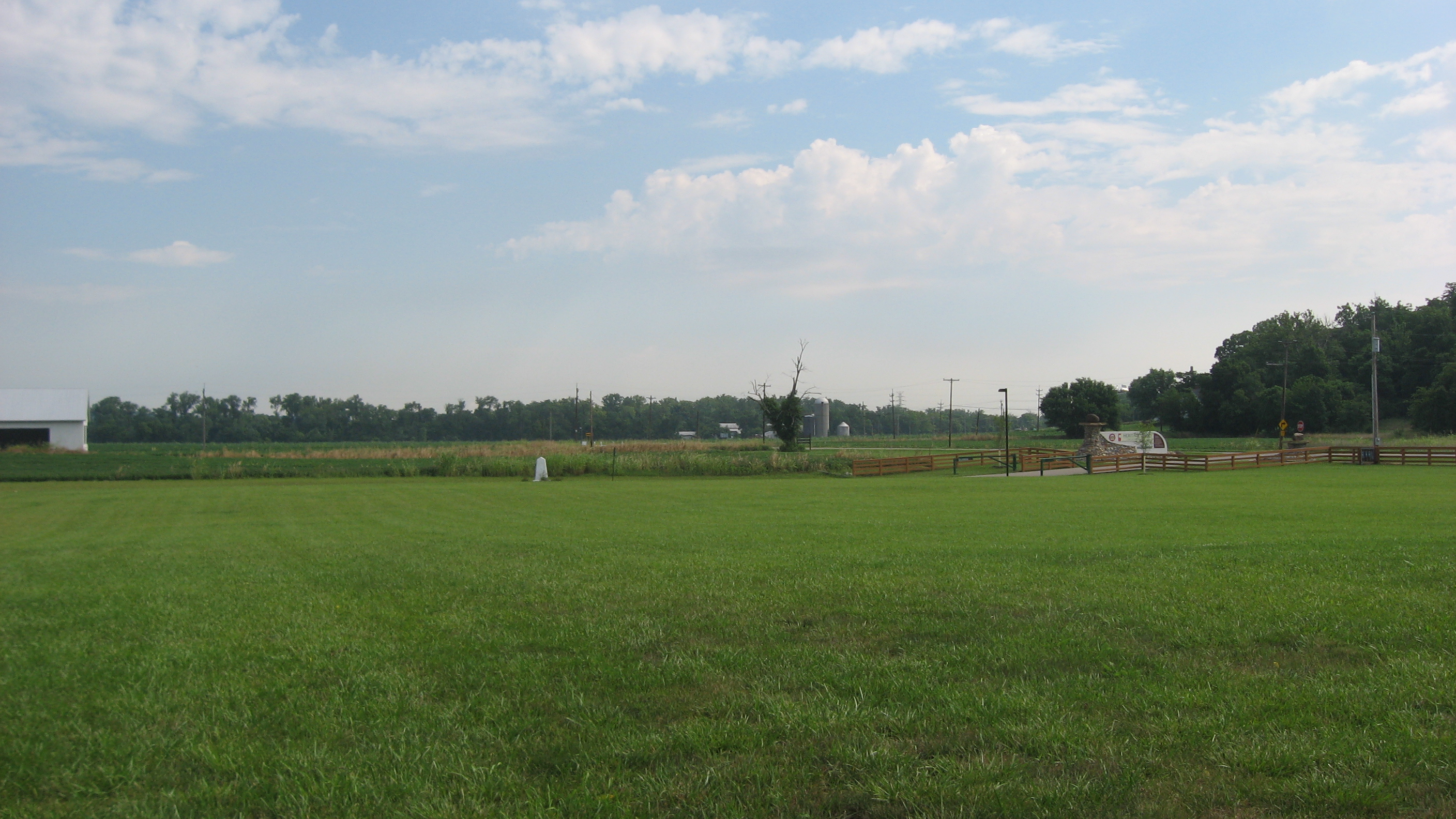Overview

Dunlap’s Station, also known as Fort Colerain, was an installation on the east bank of the Miami River which was established in early 1790. It is northwest of present day Cincinnati, Ohio nestled in a bend just downriver from the U.S. Route 27 Bridge between Cincinnati, Ohio and Ross, Ohio. Dunlap’s Station was named after John Dunlap, the man hired to survey the Miami Purchase, in what is now Hamilton, Butler, and Warren counties in Ohio. It is unclear whether this John Dunlap is the same John Dunlap who was one of the most successful American printers of his time, who printed the first copies of the Declaration of Independence, and who was mentioned in Report No. 362, 1st Session 25 Congress as being the man hired to survey the Miami Purchase. If we assume they are not one and the same, then the existence of two men named John Dunlap from Ireland is highly coincidental. The Siege of Dunlap’s Station took place during the Northwest Indian War, also known as Little Turtle’s War.
Northwest Indian War

The Northwest Indian War occurred between the newly formed United States of America and numerous Indian tribes, supported by the British, for control over the Northwest Territory in 1785. The Northwest Territory now encompasses the states of Michigan, Wisconsin, Illinois, Indiana, parts of Minnesota, and Ohio. The Northwest Indian War took place approximately 3 years after the United States of America gained its independence from the British crown. In November and December of 1790 the plans for simultaneous sieges on Dunlap’s and Baker’s Station were drawn up during meetings between British Indian agents and Chiefs of the confederated tribes. The “white Indian” known as Simon Girty was to lead the sieges. It is unclear whether Simon Girty led the Baker’s Station siege or the Dunlap’s Station siege. However it is generally believed he led the Baker’s Station siege and was not present at Dunlap’s Station.
Simon Girty
Simon Girty was born near Harrisburg, Pennsylvania in 1741. In 1756 his family was captured by the Lenape tribe and his step-father was burned at the stake. He eventually wound up with the Seneca, a tribe near Lake Erie’s east shore with Pennsylvania. By the time of his departure in 1764, during a prisoner exchange after the Pontiac War, Simon Girty had assimilated with the Seneca and preferred their culture. In 1774, just before the formal outbreak of the American Revolution, Simon Girty fought alongside individuals such as George Rogers Clark, Simon Kenton, Thomas and Edward Cunningham, Daniel Boone, Colonel William Crawford, Daniel Morgan, and William Caldwell, on the side of the British during Lord Dunmore’s War. During the initial outbreak of the American Revolution, he sided with the revolutionaries. In early 1778, Simon Girty defected to the British and their Indian allies in Detroit. He subsequently fought alongside and led multiple attacks against the revolutionaries. He even ended up fighting those whom he had served alongside; Daniel Boone in the Battle of Blue Licks near the end of the war and Continental Army Colonel William Crawford during his ritual torture and execution. It was his presence during and testimony by John Knight after, that led to his vilification in the United States of America.
The Siege of Dunlap’s Station
The Siege of Dunlap’s Station began on January 8, 1791, approximately 1 year after it was established, and lasted until January 11, 1791. On January 8, 1791 a surveying party, unaffiliated with Dunlap’s Station, crossed the Great Miami River to the west bank. The party, consisting of John Wallace, John Sloan, Abner Hunt, and Cunningham (It is not clear whether this Cunningham is one of the same who served alongside Simon Girty during Lord Dunmore’s War, or someone completely unrelated.), were ambushed by a Native scouting party ahead of the planned siege. Cunningham was killed, Abner Hunt was captured, and John Sloan was wounded. The remaining party members, John Wallace and John Sloan, fled to nearby Dunlap’s Station.
Lieutenant Jacob Kingsbury, began preparations for a siege. On January 10, 1791 the Natives approached the station and demanded their surrender using Abner Hunt as their interpreter. During the negotiations gunfire broke out. The resulting skirmish lasted roughly twenty four hours, after which the Natives withdrew when they failed to set the fort ablaze with fire arrows. Shortly after their withdrawal, a relief force from Fort Washington, located in present day Cincinnati Ohio, arrived being led by John Wallace who had volunteered to gather reinforcements.
Abner Hunt, previously captured, was murdered in Native captivity according to later reports by Kingsbury. There are conflicting reports on whether Abner Hunt was tortured or not prior to his death, however Kingsbury makes no mention of such a thing happening in his official reports. Although his reports are mentioned in other works, I have not been able to locate them. The closest I could find was a correspondence to Kingsbury from one Brigadier General Hamar on January 14, 1791.
Primary Sources
- Clerk’s Office of the District Court for the District of Ohio. Notes on the Early Settlement of the Northwestern Territory. By Jacob Burnet. Cincinnati: Derby, Bradley & Co, 1847.
- Report No. 362, 1st Session 25th Congress. Government Printing Office, 1879. Congressional Series of United States Public Documents.
- Ohio Archaeological and History Publications. Vol. XVII. Fred. J. Heer, 1908. 64-72.
Secondary Sources
- Butts, Edward. “Return of the White Savage.” Simon Girty: Wilderness Warrior. 196-97.
- “John Dunlap.” American National Biography. Mark Carnes and John Garranty, Vol. 7. New York: Oxford, 1999.
- “Dunlap/Delap Papers.” Public Records office of Northern Ireland, November 2007.
